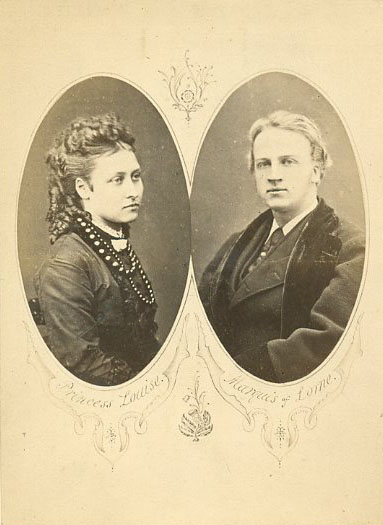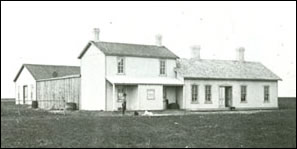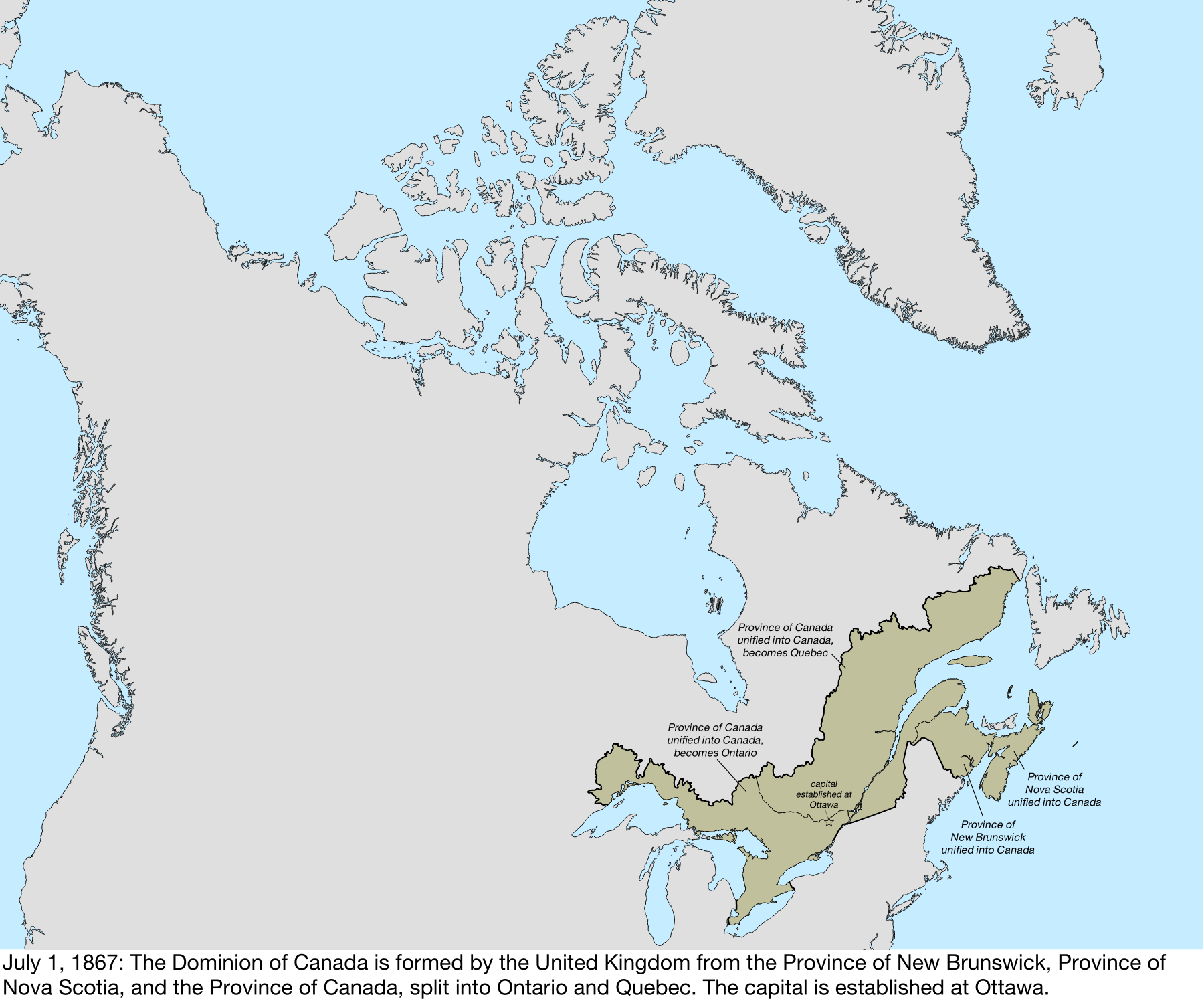|
Qu'Appelle, Saskatchewan
Qu'Appelle () is a town in Saskatchewan, located on Saskatchewan Highway 35, Highway 35 approximately east of the provincial capital (political), capital of Regina, Saskatchewan, Regina. Qu'Appelle was for a time the terminus of the Canadian Pacific Railway and the major distribution centre for what was then the District of Assiniboia in the Northwest Territories, North-West Territories and is now southern Saskatchewan. The town is situated in a lush rolling parkland, with intermittent coulees containing steady-flowing creeks running into the Qu'Appelle Valley, Aspen parkland, poplar bluffs, and sloughs. Qu'Appelle had at one stage been credibly anticipated to be the major metropole of the North-West Territories by both the federal Government of Canada, government and the Church of England (since 1955 the Anglican Church of Canada). It was under serious consideration by the federal government as district headquarters of the Assiniboia#District of Assiniboia, District of Assinibo ... [...More Info...] [...Related Items...] OR: [Wikipedia] [Google] [Baidu] |
Provinces And Territories Of Canada
Within the geographical areas of Canada, the ten provinces and three territories are sub-national administrative divisions under the jurisdiction of the Canadian Constitution. In the 1867 Canadian Confederation, three provinces of British North America—New Brunswick, Nova Scotia, and the Province of Canada (which upon Confederation was divided into Ontario and Quebec)—united to form a federation, becoming a fully independent country over the next century. Over its history, Canada's international borders have changed several times as it has added territories and provinces, making it the world's second-largest country by area. The major difference between a Canadian province and a territory is that provinces receive their power and authority from the ''Constitution Act, 1867'' (formerly called the ''British North America Act, 1867''), whereas territorial governments are creatures of statute with powers delegated to them by the Parliament of Canada. The powers flowing from t ... [...More Info...] [...Related Items...] OR: [Wikipedia] [Google] [Baidu] |
Coulee
Coulee, or coulée ( or ) is a term applied rather loosely to different landforms, all of which refer to a kind of valley or drainage zone. The word ''coulee'' comes from the Canadian French ''coulée'', from French ''couler'' 'to flow'. The term is often used interchangeably in the Great Plains for any number of water features, from ponds to creeks. In southern Louisiana the word ''coulée'' (also spelled ''coolie'') originally meant a gully or ravine usually dry or intermittent but becoming sizable during rainy weather. As stream channels were dredged or canalized, the term was increasingly applied to perennial streams, generally smaller than bayous. The term is also used for small ditches or canals in the swamp. In the northwestern United States, coulee is defined as a large, steep-walled, trench-like trough, which also include spillways and flood channels incised into the basalt plateau. Types and examples * The dry, braided channels formed by glacial drainage of t ... [...More Info...] [...Related Items...] OR: [Wikipedia] [Google] [Baidu] |
John Campbell, 9th Duke Of Argyll
John George Edward Henry Douglas Sutherland Campbell, 9th Duke of Argyll, (6 August 1845 – 2 May 1914), usually better known by the courtesy title Marquess of Lorne, by which he was known between 1847 and 1900, was a British nobleman who was Governor General of Canada from 1878 to 1883. He was the husband of Princess Louise, fourth daughter of Queen Victoria. He was the first president of "Rangers Football Club", thanks to his Argyll ties to the original founders of the football club. Background and career Campbell was born in London, the eldest son of George, Marquess of Lorne and the former Lady Elizabeth Sutherland-Leveson-Gower, daughter of the 2nd Duke of Sutherland, and was styled Earl of Campbell from birth. In 1847, when he was 21 months old, his father succeeded as 8th Duke of Argyll and he assumed the courtesy title Marquess of Lorne, which he bore until he was 54. He was educated at Edinburgh Academy, Eton College, St Andrews and at Trinity College, Cambridge, ... [...More Info...] [...Related Items...] OR: [Wikipedia] [Google] [Baidu] |
Queen Victoria
Victoria (Alexandrina Victoria; 24 May 1819 – 22 January 1901) was Queen of the United Kingdom of Great Britain and Ireland from 20 June 1837 until Death and state funeral of Queen Victoria, her death in 1901. Her reign of 63 years and 216 days was longer than that of List of monarchs in Britain by length of reign, any previous British monarch and is known as the Victorian era. It was a period of industrial, political, scientific, and military change within the United Kingdom, and was marked by a great expansion of the British Empire. In 1876, the British Parliament voted to grant her the additional title of Empress of India. Victoria was the daughter of Prince Edward, Duke of Kent and Strathearn (the fourth son of King George III), and Princess Victoria of Saxe-Coburg-Saalfeld. After the deaths of her father and grandfather in 1820, she was Kensington System, raised under close supervision by her mother and her comptroller, John Conroy. She inherited the throne aged 18 af ... [...More Info...] [...Related Items...] OR: [Wikipedia] [Google] [Baidu] |
Princess Louise, Duchess Of Argyll
Princess Louise, Duchess of Argyll, (Louisa Caroline Alberta; 18 March 1848 – 3 December 1939) was the sixth child and fourth daughter of Queen Victoria and Prince Albert. In her public life, she was a strong proponent of the arts and higher education and of the feminist cause. Her early life was spent moving among the various royal residences in the company of her family. When her father died in December 1861, the court went into a long period of mourning, to which with time Louise became unsympathetic. She was an able sculptor and artist, and several of her sculptures remain today. She was also a supporter of the feminist movement, corresponding with Josephine Butler, and visiting Elizabeth Garrett. Before her marriage, Louise served as an unofficial secretary to the Queen from 1866 to 1871. The question of Louise's marriage was discussed in the late 1860s. Suitors from the royal houses of Prussia and Denmark were suggested, but Victoria did not want her to marry a foreig ... [...More Info...] [...Related Items...] OR: [Wikipedia] [Google] [Baidu] |
Edgar Dewdney
Edgar Dewdney, (November 5, 1835 – August 8, 1916) was a Canadian surveyor, road builder, Indian commissioner and politician born in Devonshire, England. He emigrated to British Columbia in 1859 in order to act as surveyor for the Dewdney Trail that runs through the province. In 1870, Dewdney decided to take up a role in Canadian government. In this year, he was elected to the Legislative Council of British Columbia as a representative form the Kootenay region. In 1872, he was elected as a member of Federal Government for the Yale region representing the Conservative party. He was reelected to this position in 1874 and again in 1878. Dewdney served as Lieutenant Governor of the North-West Territories from 1879 to 1888, and the fifth Lieutenant-Governor of British Columbia from 1892 to 1897. Additionally, he served as the Indian commissioner in the North-West Territories from 1879 until 1888. In 1897, Dewdney retired from politics and began working as a financial agent until ... [...More Info...] [...Related Items...] OR: [Wikipedia] [Google] [Baidu] |
Lieutenant Governor
A lieutenant governor, lieutenant-governor, or vice governor is a high officer of state, whose precise role and rank vary by jurisdiction. Often a lieutenant governor is the deputy, or lieutenant, to or ranked under a governor — a "second-in-command", rather like deputy governor. In Canadian provinces and in the Dutch Caribbean, the lieutenant governor is the representative of the monarch in that jurisdiction, and thus outranks the head of government but for practical purposes has virtually no power. In India, lieutenant governors are in charge of special administrative divisions in that country. In the United States, lieutenant governors are usually second-in-command to a state governor, and the actual power held by the lieutenant governor varies greatly from state to state. The lieutenant governor is often first in line of succession to the governorship, and acts as governor when the governor leaves the state or is unable to serve. Also, the lieutenant governor is often the ... [...More Info...] [...Related Items...] OR: [Wikipedia] [Google] [Baidu] |
Alberta
Alberta ( ) is one of the thirteen provinces and territories of Canada. It is part of Western Canada and is one of the three prairie provinces. Alberta is bordered by British Columbia to the west, Saskatchewan to the east, the Northwest Territories (NWT) to the north, and the U.S. state of Montana to the south. It is one of the only two landlocked provinces in Canada (Saskatchewan being the other). The eastern part of the province is occupied by the Great Plains, while the western part borders the Rocky Mountains. The province has a predominantly continental climate but experiences quick temperature changes due to air aridity. Seasonal temperature swings are less pronounced in western Alberta due to occasional Chinook winds. Alberta is the fourth largest province by area at , and the fourth most populous, being home to 4,262,635 people. Alberta's capital is Edmonton, while Calgary is its largest city. The two are Alberta's largest census metropolitan areas. More tha ... [...More Info...] [...Related Items...] OR: [Wikipedia] [Google] [Baidu] |
Diocese Of Qu'Appelle
The Diocese of Qu'Appelle in the Anglican Church of Canada lies in the southern third of the civil province of Saskatchewan and contains within its geographical boundaries some 50 per cent of the province's population of one million. Establishment The diocese was established by the Synod of the Ecclesiastical Province of Rupert's Land in 1884 at the beginning of European settlement on the Canadian prairies beyond the vicinity of Winnipeg; it geographically corresponds to the former District of Assiniboia in the then North-West Territories : indeed, until the 1970s it precisely so-corresponded, and included a strip of territory lying over the Alberta provincial boundary once the provinces of Saskatchewan and Alberta were created in 1905. This was ceded to the Diocese of Calgary. At the beginning of settlement it was unclear where the District headquarters and territorial capital would be; the diocese selected the then-burgeoning village of Troy (now Qu'Appelle), some east ... [...More Info...] [...Related Items...] OR: [Wikipedia] [Google] [Baidu] |
Territorial Evolution Of Canada
The history of post-confederation Canada began on July 1, 1867, when the British North American colonies of Canada, New Brunswick, and Nova Scotia were united to form a single Dominion within the British Empire. Upon Confederation, the United Province of Canada was immediately split into the provinces of Ontario and Quebec. The colonies of Prince Edward Island and British Columbia joined shortly after, and Canada acquired the vast expanse of the continent controlled by the Hudson's Bay Company, which was eventually divided into new territories and provinces. Canada evolved into a fully sovereign state by 1982. Before being part of British North America, the constituents of Canada consisted of the former colonies of Canada and Acadia from within New France which had been ceded to Great Britain in 1763 as part of the Treaty of Paris. French Canadian nationality was maintained as one of the "two founding nations" and legally through the Quebec Act which ensured the maintenance of the ... [...More Info...] [...Related Items...] OR: [Wikipedia] [Google] [Baidu] |
Assiniboia
Assiniboia District refers to two historical districts of Canada's Northwest Territories. The name is taken from the Assiniboine First Nation. Historical usage ''For more information on the history of the provisional districts, see also Districts of the Northwest Territories'' (Old) District of Assiniboia The District of Assiniboia was a name used to describe the Red River Colony, mainly for official purposes, between 1812 and 1869. Nominally the district included all of the territory granted in the Selkirk Concession, however much of this was ceded to the United States in 1818 (from the Treaty of 1818) and in 1838 the district was redefined as the circular region within 50 miles of Fort Garry, which was the junction of the Red and Assiniboine rivers. The actual area of settlement, centered at present-day Winnipeg, was limited to the Red River valley between Lower Fort Garry and Pembina, North Dakota, and the Assiniboine River valley between Winnipeg and Portage la Prairie, Man ... [...More Info...] [...Related Items...] OR: [Wikipedia] [Google] [Baidu] |
Anglican Church Of Canada
The Anglican Church of Canada (ACC or ACoC) is the Ecclesiastical province#Anglican Communion, province of the Anglican Communion in Canada. The official French-language name is ''l'Église anglicane du Canada''. In 2017, the Anglican Church counted 359,030 members on parish rolls in 2,206 congregations, organized into 1,571 parishes. The Canada 2011 Census, 2011 Canadian Census counted 1,631,845 self-identified Anglicans (5 percent of the total Canadian population), making the Anglican Church the third-largest Canadian church after the Catholic Church and the United Church of Canada.2011 is the most recent census to collect information on religion in Canada. Statistics Canada:"Please note that information about religion is only collected once every 10 years." The 2021 Canadian census, 2021 Canadian Census counted more than 1 million self-identified Anglicans (3.1% of the total Canadian population), remaining the third-largest Canadian church. Like other Anglican churches, the An ... [...More Info...] [...Related Items...] OR: [Wikipedia] [Google] [Baidu] |




%2C_after_Franz_Xavier_Winterhalter_-_Portrait_of_Princess_Louise_(1848-1939).jpg)




.jpg)